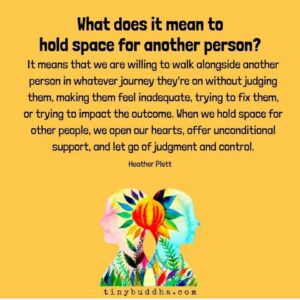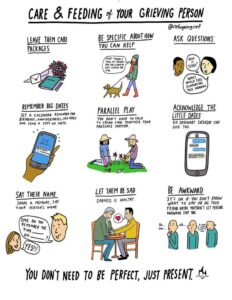Having a strong personal relationship with hope is a critical piece of personal wellbeing and happiness. Hope helps us look forward to the future. It plays an important part in setting goals and being able to envision them. Hope can help us push through adversity. Sometimes, when things are really, really bad, hope is all we have.
Hope is a tricky thing for so many people. We are all born with a basic personality type. Some people are born with a type where it is easier to feel optimism. For others, being exceedingly cautious is an innate feeling. Then comes life experiences. The challenges of life which come to all of us can make us feel like hope is impossible. When we feel like we have lost control of our life, having control over our level of hope for the future feels impossible too.
How do we reinvent our relationship with hope? It starts with the three A’s: Anger, Adapt, and Acceptance.
Anger: When it comes to resolving painful feelings, “the only way out is through.” We have to feel the anger about what has happened to us. We have to feel the injustice, the unfairness, and the disappointment. The anger needs to come out, in healthy ways, or it gets turned inward which often evolves into depression. When you are ready, use this anger to find meaning and purpose in the suffering
Adapt: To find hope again, we often need to change directions. Perhaps it is time to redefine your goals. Maybe it is time to “lower the bar” in terms of your own definition of “success.” This does not mean giving up. It means living your life with intention – what is in your life that does not serve you any longer, what brings your peace? Surround yourself with people who genuinely want to support you, not control or change you. Think about times in your life when hope served you well.
Acceptance: Disappointment can dissipate when we accept who we are and what has happened. This does not mean we have to like what happened. Acceptance means that we are able to sit with unwanted experiences without pain or judgment. We incorporate these experiences into our life journey and find a way to make them work for us and not against us.
If finding hope feels unbearable for now, let others hold that space for you. Those who are not as close to the problem as you are can often see hope for the future when you cannot. And that is okay. The only constant in life is change. As much as good things can go away, so can the bad things. To quote the last line of one of my favorite poems, “The way things work is that eventually something catches.” (The Way Things Work, By Jorie Graham)
The bad things that happen to us do not have to define us. They can redefine us as we learn about how these experiences fit into our story. We can take the life lessons and carry them with us so we are wiser and find ways to feel hope again. And, maybe someday, you will have some hope leftover to offer someone else.

